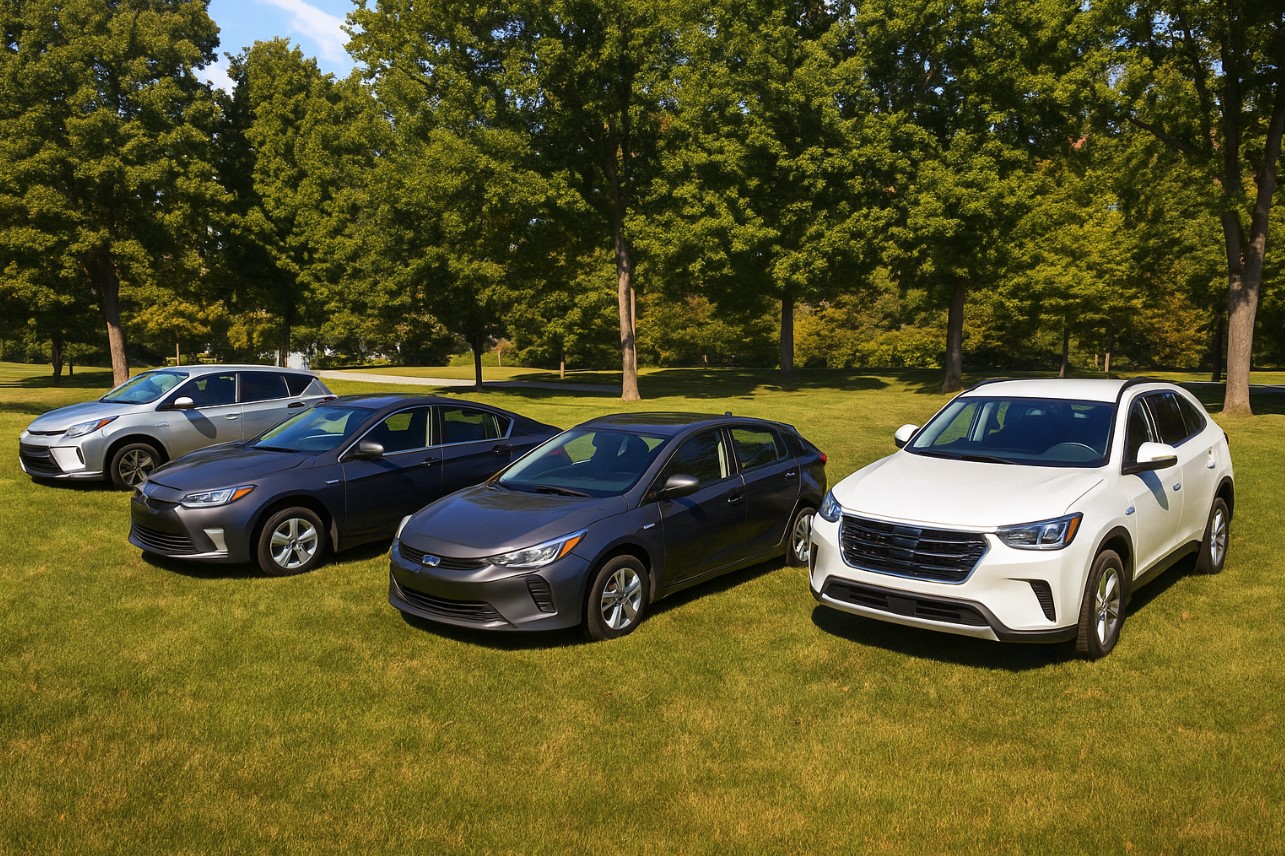 Best hybrid cars 2015–2025 (author’s view)
Best hybrid cars 2015–2025 (author’s view)
Sitting down in an unfamiliar car can feel like jumping from a jet into a UFO. No panic needed: every car has its quirks. Treat the process like an adventure — after a couple of short drills the car will feel almost “yours”.
Prep for the first drive
- ✔️Seating & visibility. Adjust seat height/reach/backrest and mirrors to see car edges and blind spots.
- ✔️Seat belt. Always start with it — it’s the first safety step.
- ✔️Primary controls. Wheel, pedals, parking brake (mechanical/electric) — everything should be within reach.
- ✔️Engine start. Key, key slot or Start/Stop button (press the brake for automatics).
- ✔️Cluster & warnings. Fuel level, warning lamps, no active error messages.
- ✔️Lights & horn. Low/high beam, fogs, indicators, hazards, horn.
- ✔️Assist systems. Cruise control, parking sensors, camera — quickly learn how to activate them.
Questions to ask the owner before driving/buying
- ❓Exact start sequence? Do I need to press brake/clutch?
- ❓When was the last service and current mileage?
- ❓Required fuel/energy (octane/diesel/gas/EV) and any refuelling/charging quirks?
- ❓Tire pressure and age — recommended values?
- ❓Transmission type, manual mode/paddles and how to use them.
- ❓Feature specifics: keyless entry, heaters, driver assists.
- ❓Documents: registration, service book, TÜV/Dekra records.
Control differences: features, not flaws
An AT selector with P-R-N-D, a joystick shifter, many steering-wheel buttons and assistants — all normal. Practice on an empty lot: short forward/reverse moves, tight turns, smooth braking. You’ll adapt quickly and enjoy the comfort.
Pre-departure checklist
- 📜Fuel and oil levels are fine; no active warnings on the dash.
- 📜Tires undamaged; pressure at the recommended setting.
- 📜Lights — low/high/stop/indicators working.
- 📜Brakes — predictable pedal travel, no odd noises.
- 📜Doors/hood — close properly; loose items secured.
Adaptation: first steps on the road
- ⚠️Start unrushed. Learn throttle and brake response; try a safe ABS stop.
- ⚠️Smooth manoeuvres. A quiet car park is the best 10–20 minute trainer.
- ⚠️Transmission. Cycle AT modes or MT gears; watch engine revs and shifts.
- ⚠️Noise & vibration. Listen to engine/suspension; if in doubt, ask a specialist.
- ⚠️Comfort. Set climate, media and seating — reduces fatigue and mistakes.
Choosing a car before you buy
- Compare several options and powertrain variants.
- Prioritise: running costs, maintenance, size, safety.
- Insist on independent checks: technical, OBD, paint and documents.
- Don’t confuse “cool features” with reliability — judge engineering and condition.
Our services — selection and inspection help
- 🔥Choice consultation. Tailored to your tasks and budget.
- 🔥Test drive & escort. We ride with you (or instead of you) and give feedback immediately.
- 🔥Technical inspection & sourcing. Body/paint, OBD scan, suspension, brakes, legal checks.
- 🔥Paperwork. Help with the deal and insurance.
FAQ — frequently asked questions
The Check Engine came on during my first drive — is it critical?
Not always. Stop safely, read the message, check the fuel cap and for obvious symptoms. An OBD scan will tell more: many codes aren’t critical, but none should be ignored.
How do I know the brake pedal feels “right”?
Travel should be predictable, without a “dead” zone. In an emergency stop you’ll feel ABS pulsing and the car remains steerable. If it pulls or squeals — have it inspected.
Do I need a long test drive?
Ideally 15–20 minutes in mixed conditions: city, parking drills, and a stretch at 80–100 km/h. That’s when hidden behaviours show up.

 Why a CarVertical report can’t replace a live expert check
Why a CarVertical report can’t replace a live expert check